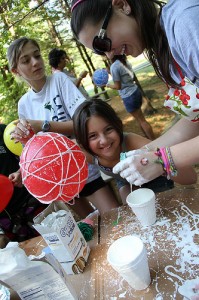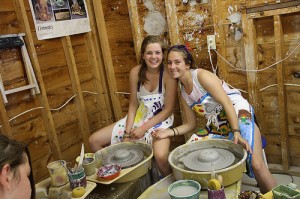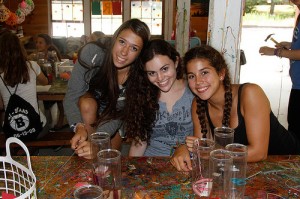Just because your children are no longer at camp doesn’t mean you can’t create a camp atmosphere in your home. There are several things you can do to keep the camp spirit alive all year long.
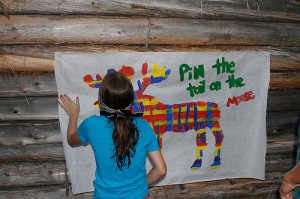 This doesn’t have to be a radical flip of the switch that completely eliminates conveniences and luxuries from your lives. In fact, such an act is probably not very realistic for many families. But taking small steps to reduce your children’s reliance on things such as television, video games, and cell phones is a great way to remind them that don’t need them as much as they think they do. Designate a day or two each week in which you won’t turn on the television or play video games. Have a family game night instead. Board games and card games are a great, light-hearted way to bring the entire family together for a few hours. Turn off cell phones during meal times, before a designated time in the morning, and after a designated time in the evening. Yes, with the invention of smart phones, we’re becoming increasingly reliant on these convenient little gadgets, but you may be surprised at just how much you enjoy the peace and quiet of a few hours without them each day…and, your family will also likely remember just how much they appreciate having a conversation with someone who is not looking at their cell phone or texting the entire time.
This doesn’t have to be a radical flip of the switch that completely eliminates conveniences and luxuries from your lives. In fact, such an act is probably not very realistic for many families. But taking small steps to reduce your children’s reliance on things such as television, video games, and cell phones is a great way to remind them that don’t need them as much as they think they do. Designate a day or two each week in which you won’t turn on the television or play video games. Have a family game night instead. Board games and card games are a great, light-hearted way to bring the entire family together for a few hours. Turn off cell phones during meal times, before a designated time in the morning, and after a designated time in the evening. Yes, with the invention of smart phones, we’re becoming increasingly reliant on these convenient little gadgets, but you may be surprised at just how much you enjoy the peace and quiet of a few hours without them each day…and, your family will also likely remember just how much they appreciate having a conversation with someone who is not looking at their cell phone or texting the entire time.
 Keep supplies for creative bursts. Arts & Crafts, Eco Science, and Nature don’t have to be activities restricted to the camp setting. In fact, many of the projects that your children do at camp can quite easily be done at home, and they’re a great way to fill an afternoon or evening on which you’ve decided to have a break from television and video games. There are books readily available that walk you step-by-step through such popular camp projects as tie-dying, candle making, beading, shrinky dinks, Mentos geysers, goo, and many more. YouTube also has a host of videos that demonstrate kid friendly home science and nature experiments. Keeping a closet or a chest of standard supplies for these types of projects will prevent you from having to make a shopping trip every time the kids want to have some summer camp style fun.
Keep supplies for creative bursts. Arts & Crafts, Eco Science, and Nature don’t have to be activities restricted to the camp setting. In fact, many of the projects that your children do at camp can quite easily be done at home, and they’re a great way to fill an afternoon or evening on which you’ve decided to have a break from television and video games. There are books readily available that walk you step-by-step through such popular camp projects as tie-dying, candle making, beading, shrinky dinks, Mentos geysers, goo, and many more. YouTube also has a host of videos that demonstrate kid friendly home science and nature experiments. Keeping a closet or a chest of standard supplies for these types of projects will prevent you from having to make a shopping trip every time the kids want to have some summer camp style fun.
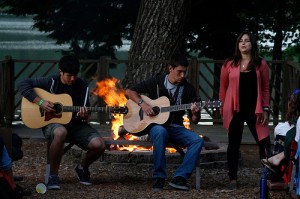 Have a “campfire”. You might not have a backyard big enough (and there may be some local ordinances against this, even if you do), but consider having a backyard fire. A patio fire pit, if you have one, is actually ideal. An operable indoor fireplace works, too. Make s’mores, tell stories, share memories. This makes for a great evening to invite friends over because, as every camper will tell you, the more the merrier at a campfire. If you live in an area in which weather permits, actually taking a weekend camping trip is always fun, too.
Have a “campfire”. You might not have a backyard big enough (and there may be some local ordinances against this, even if you do), but consider having a backyard fire. A patio fire pit, if you have one, is actually ideal. An operable indoor fireplace works, too. Make s’mores, tell stories, share memories. This makes for a great evening to invite friends over because, as every camper will tell you, the more the merrier at a campfire. If you live in an area in which weather permits, actually taking a weekend camping trip is always fun, too.
Start a garden (if you have a yard) or cook with your children once a week. Gardening and cooking programs are popular at camp.  Even if you don’t have the space in your yard, herb gardens are easy to maintain and can be grown indoors. Besides being enjoyable and fun, cooking is a valuable life skill for children to learn. Let your children look up healthy recipes, talk about nutrition with them, and, most importantly, let them do the work in the kitchen.
Even if you don’t have the space in your yard, herb gardens are easy to maintain and can be grown indoors. Besides being enjoyable and fun, cooking is a valuable life skill for children to learn. Let your children look up healthy recipes, talk about nutrition with them, and, most importantly, let them do the work in the kitchen.
Have regular family “out of the house” trips. At camp, children regularly take “out of camp” trips to places such as local sporting events, the movies, or bowling… They look forward to these trips as a special treat and time to create some very special memories with their camp friends. Why not make special memories like these as a family?
By making just a few (fun) adjustments, your entire family can enjoy the spirit of camp throughout the year, and it just might make those ten months of waiting a little more bearable for the kids!


